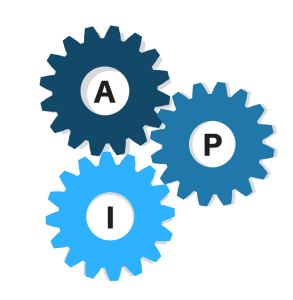Archives
- Newer posts
- April 2024
- November 2023
- October 2023
- August 2023
- May 2023
- February 2023
- October 2022
- August 2022
- July 2022
- May 2022
- April 2022
- March 2022
- February 2022
- June 2020
- March 2020
- February 2020
- January 2020
- December 2019
- November 2019
- October 2019
- September 2019
- August 2019
- July 2019
- June 2019
- May 2019
- April 2019
- March 2019
- February 2019
- January 2019
- December 2018
- November 2018
- October 2018
- September 2018
- August 2018
- July 2018
- June 2018
- May 2018
- April 2018
- March 2018
- February 2018
- January 2018
- December 2017
- November 2017
- October 2017
- September 2017
- August 2017
- July 2017
- June 2017
- May 2017
- April 2017
- March 2017
- February 2017
- January 2017
- August 2016
- June 2016
- April 2016
- March 2016
- February 2016
- January 2016
- July 2015
- June 2015
- Older posts

APIs – What are they useful for?
API stands for ‘application programming interface’. Let me break this for you – “Application”, if you have a smart phone, you are well acquainted with what applications are, i.e., the tools, games, social media and other software that we use every day.
“Programming”, Programming is how engineers create all the software that make our lives so much easier.
“Interface”, an interface is a common boundary shared by two applications or programs that allow both to communicate with one another. So, an API is essentially a way for programmers to communicate with a certain application.
An API is a set of commands, functions, and protocols which programmers can use when building software for a specific HYPERLINK “http://techterms.com/definition/operating_system” operating system. The API allows programmers to use predefined functions to interact with the operating system, instead of writing them from scratch.
Whenever a developer or tool requests information from an API, they need to call that API, this is called an ‘API Call’.
The main idea behind Application Program Interfaces is that they allow a faster and more reliable software development. Instead of fully establishing all of the features of your own application, with API you can fully focus on the core values of your code. You are enriching your code with the already developed software by simply connecting it to your application.
Top tracked APIs of all time include Facebook, Google Maps, Twitter, YouTube etc.
Popular API Examples
- HYPERLINK “https://developers.google.com/maps/” \t “http://www.webopedia.com/TERM/A/_blank” Google Maps API: Google Maps APIs lets developers embed Google Maps on webpages using a JavaScript or Flash interface. The Google Maps API is designed to work on mobile devices and desktop browsers.
- HYPERLINK “https://developers.google.com/youtube/” \t “http://www.webopedia.com/TERM/A/_blank” YouTube APIs: YouTube API: Google’s APIs lets developers integrate YouTube videos and functionality into websites or applications.
- HYPERLINK “https://dev.twitter.com/” \t “http://www.webopedia.com/TERM/A/_blank” Twitter APIs: Twitter offers two APIs. The REST API allows developers to access core twitter data and the Search API provides methods for developers to interact with Twitter Search and trends data.